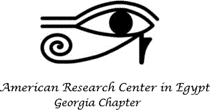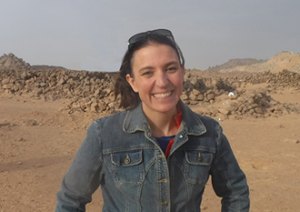
21
OctGeorgia: Blueprints for Bureaucracy: How the Egyptian Government Designed Settlements in the Desert to Oversee Amethyst Mining
Registration is Required
Presented by: Dr. Kate Liszka
The Carlos Museum and ARCE Georgia are jointly sponsoring these programs.
- 4:00 PM ETGeorgia
- Zoom
- + Add to Calendar
Free and open to the public
Lecture Information
The design of a space is an essential element to the organization of productive work generated by the people using that space. Deep in Egypt’s Eastern Desert, we see this at the fortified settlements of Site 5 and Site 9 at Wadi el-Hudi. These settlements have often been confused with fortresses because of elements from their designs, but fortification was not its main purpose. In it, administrators oversaw the quarrying and refining of amethyst in two of Ancient Egypt’s largest and most productive mines. Hundreds of workers, soldiers, scribes, and administrators used these structures for a variety of purposes, from basic living and storage needs to the administration of work and the dedication of monuments. This talk will present results from ongoing archaeological survey and excavation of the Wadi el-Hudi Expedition in Egypt’s Eastern Desert. Focusing on Sites 5 and 9, Dr. Liszka will examine various architectural and archaeological nuances to elicit how Egyptian officials designed their spaces to maximize amethyst production through the organization of their workforces and workspaces. These principles of organization of administration can speak to the greater importance of architecture and design as means of control and productivity.
Speaker Bio
 Dr. Kate Liszka is Professor of History and the Pamela and Benson Harer Fellow specializing in Egyptology at California State University, San Bernardino. She received a PhD in Egyptian Archaeology from the University of Pennsylvania in 2012 and was a Cotsen Postdoctoral Fellow and Lecturer with Princeton University from 2012-2015. Currently Dr. Liszka is the Director of the Wadi el-Hudi Expedition in Egypt’s Eastern Desert. She enjoys studying questions of labor, administration, identity, and Egyptian-Nubian interactions in the ancient world. Her areas of specialization are Nubians in Egypt, the Medjay, ethnicity and identity in Antiquity, multicultural Interactions in frontier regions, the Pangrave Archaeological Culture, and large-scale mining expeditions in Antiquity.
Dr. Kate Liszka is Professor of History and the Pamela and Benson Harer Fellow specializing in Egyptology at California State University, San Bernardino. She received a PhD in Egyptian Archaeology from the University of Pennsylvania in 2012 and was a Cotsen Postdoctoral Fellow and Lecturer with Princeton University from 2012-2015. Currently Dr. Liszka is the Director of the Wadi el-Hudi Expedition in Egypt’s Eastern Desert. She enjoys studying questions of labor, administration, identity, and Egyptian-Nubian interactions in the ancient world. Her areas of specialization are Nubians in Egypt, the Medjay, ethnicity and identity in Antiquity, multicultural Interactions in frontier regions, the Pangrave Archaeological Culture, and large-scale mining expeditions in Antiquity.